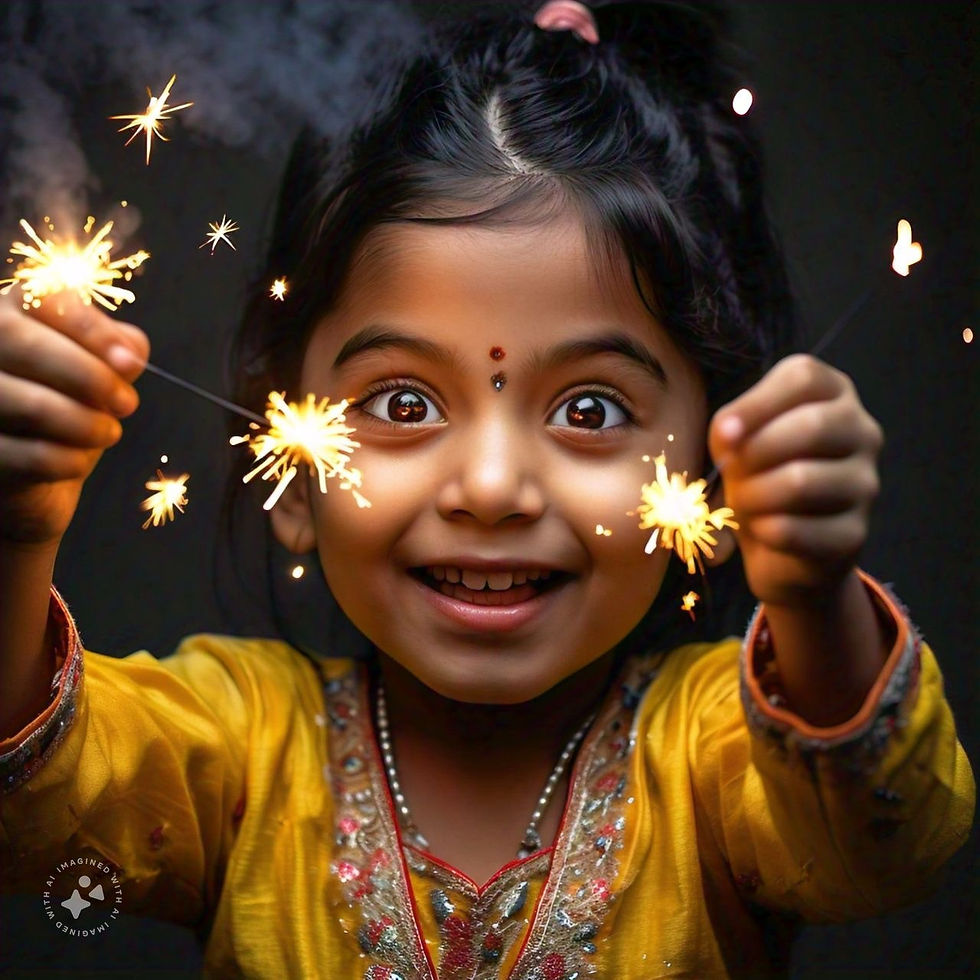
Deepawali, known as the festival of lights, brings joy, togetherness, and celebration to families across India and beyond. Homes light up with diyas, vibrant decorations, and festive gatherings, while the streets echo with the crackling of fireworks. While firecrackers add excitement, they also bring significant risks, especially to our eyes. Firecracker-related eye injuries are a common yet preventable consequence of Deepawali festivities. This guide outlines essential tips for eye safety, the causes and types of injuries from fireworks, firecrackers most likely to cause harm, and what to do if an eye injury occurs—ensuring a joyful and safe celebration for everyone.
Causes of Firecracker Eye Injuries
Firecracker-related eye injuries can happen for several reasons, and understanding the causes can help us prevent them:
Explosive Force of Fireworks: The powerful explosions created by firecrackers release intense heat, light, and pressure, sending sparks and particles flying at high speed. If a person is too close to this burst, it can result in serious eye damage due to debris or intense heat exposure.
User Negligence: Many injuries occur because people handle firecrackers recklessly, neglect safety measures, or don’t use protective eyewear. For example, holding firecrackers too close to the face while lighting them can lead to severe injury if they explode prematurely.
Firecracker Malfunctions: Even high-quality firecrackers can malfunction due to defects or improper storage. A firecracker that detonates unexpectedly or veers off can cause injuries by ejecting particles at high speeds.
Relighting and Salvaging Firecrackers: Attempting to relight or salvage partially ignited firecrackers is extremely dangerous. Unexpected explosions and debris ejection during re-ignition can cause serious eye injuries.
Bystanders’ Risk: Many accidents happen when people nearby are exposed to the blast or debris from fireworks. Celebrations in public areas increase the risk for bystanders, especially if firecrackers are mishandled.
Use of Homemade Fireworks: Improvised firecracker devices, like lighting crackers in empty cans or containers to amplify the sound, can lead to unpredictable explosions. This practice exposes users and bystanders to flying fragments, putting their eyes at serious risk.
Types of Eye Injuries Caused by Firecrackers
Eyes are delicate, and the force, heat, and chemicals in fireworks can cause a range of injuries, from mild irritation to permanent damage:
Corneal Abrasions: Small particles or debris from firecrackers can scratch the cornea, causing severe pain, redness, and sensitivity. While minor abrasions heal over time, untreated cases can lead to long-term vision issues.
Chemical Burns: Firecrackers often contain chemicals that create vibrant colors, but if these chemicals reach the eye, they can cause corneal scarring and surface damage, potentially leading to long-term issues like cataracts and glaucoma.
Thermal Burns: Heat generated by close-range explosions can result in thermal burns, affecting the eyelids and ocular surface. These burns can leave scars or cause corneal damage, leading to dryness or vision problems.
Foreign Body Injuries: Small fragments from exploding firecrackers can lodge in the eye, causing irritation or even damaging deeper eye structures, often requiring professional medical removal.
Blunt Trauma: Explosions can cause blunt trauma, resulting in fractures of the eye socket, cataracts, or retinal detachment, which may need immediate medical intervention.
Eye Irritation from Smoke and Fumes: Firecrackers release smoke containing irritants like sulfur dioxide and potassium nitrate, which can lead to eye irritation, excessive tearing, and discomfort, especially for individuals with allergies or those wearing contact lenses.
Types of Firecrackers Likely to Cause Eye Injuries
While all firecrackers carry risks, certain types are more dangerous for eye safety:



Sparklers: Although commonly considered safe, sparklers reach very high temperatures and can burn if they come in contact with the eye.
Exploding Firecrackers: These firecrackers are especially dangerous due to their unpredictable nature and powerful explosions, which can cause severe injuries if not handled cautiously.
Flower Pots: When lit, these crackers release high-speed particles that can be harmful if they come in contact with the eye.
Bottle Rockets: Unpredictable in direction, bottle rockets can veer off-course and hit bystanders, increasing the risk of eye injury from explosive fragments.
Aerial Shells: While creating stunning displays, aerial shells may misfire or detonate at lower altitudes, posing injury risks to onlookers.

Children playing with explosive firecrackers
Eye Safety Tips for Deepawali
To make this festival injury-free, here are important safety tips:
Do’s:
Wear Protective Eyewear: Safety goggles are essential when handling fireworks.
Keep a Safe Distance: Always stand back and avoid leaning over or looking directly into firecrackers.
Supervise Children: Ensure that children lighting fireworks are supervised closely and instructed on proper handling.
Choose Open Areas: Light fireworks in open spaces, away from flammable objects and other people.
Follow Instructions: Read and follow firecracker packaging instructions to prevent unexpected accidents.
Wash Hands and Face: After lighting firecrackers, wash hands and face thoroughly to remove residue that could cause irritation.
Don’ts:
Avoid Contact Lenses: Switch to glasses when using firecrackers, as contact lenses can be sensitive to heat and fumes.
Never Relight Failed Firecrackers: Allow dud firecrackers to cool for at least 20 minutes, then immerse in water to ensure they’re safe to discard.
Avoid Alcohol While Handling Fireworks: Alcohol impairs judgment and coordination, increasing the risk of accidents.
Say No to Homemade Fireworks: Avoid using or modifying fireworks to amplify their effects, as this can make them more dangerous.
One Firecracker at a Time: Never light multiple fireworks together, and avoid holding them in your hand when lighting.

Know the risks of firecracker injury and save sight!
Steps to Take in Case of a Firecracker Eye Injury
If an eye injury happens, quick response is essential:
Do Not Rub the Eye: Rubbing the eye can worsen the injury or embed debris further.
Rinse with Water: Gently rinse the eye with clean water for at least 15 minutes to clear debris and reduce irritation.
Protect the Eye: Use a sterile dressing or even a clean paper cup to cover the eye and protect it from further exposure.
Seek Medical Help Promptly: Avoid self-medicating. Reach out to an eye specialist or visit an emergency room for immediate care.
Conclusion
Deepawali is a time for joy, but safety should be a priority—especially for protecting our eyes. By following these precautions, knowing which firecrackers pose the most risk, and understanding how to respond to accidents, we can ensure that the festival remains safe and delightful. Celebrate the festival of lights with joy and responsibility, cherishing your precious vision while enjoying the beauty of Deepawali.



Comments